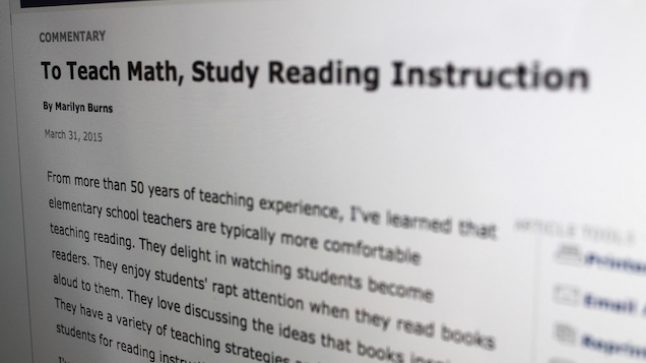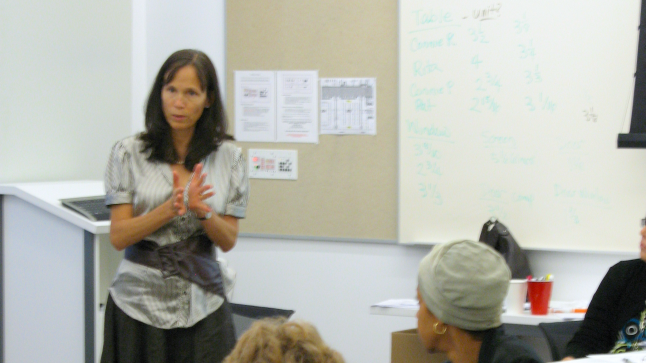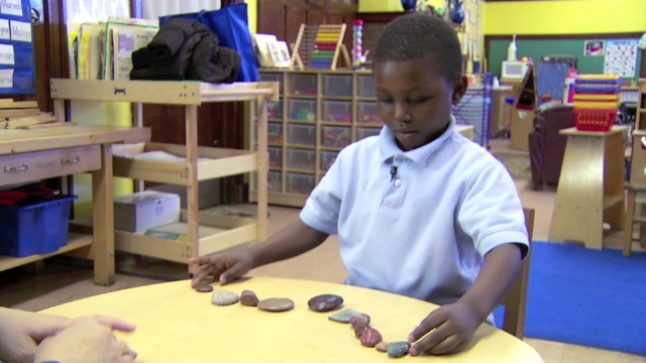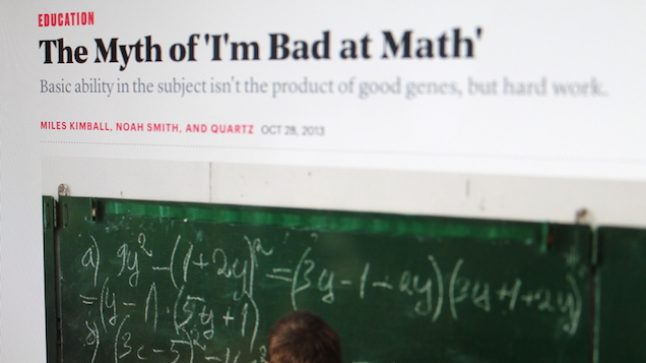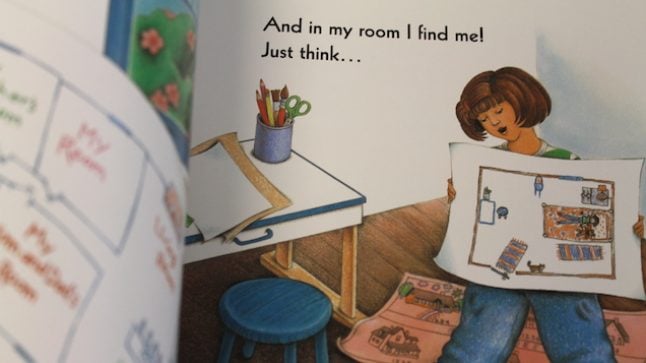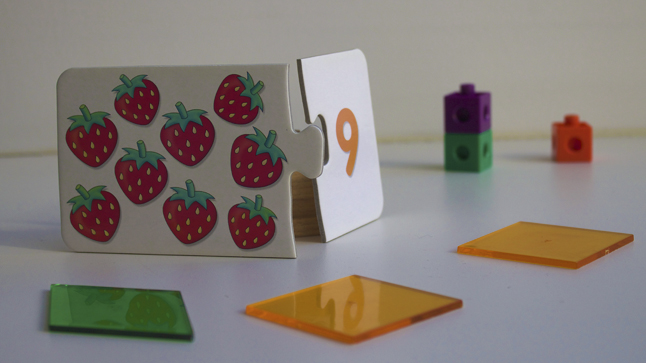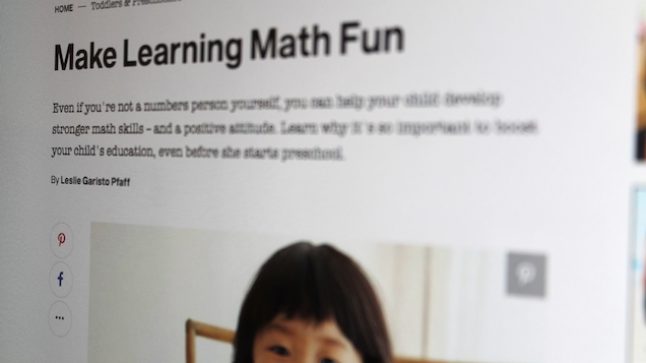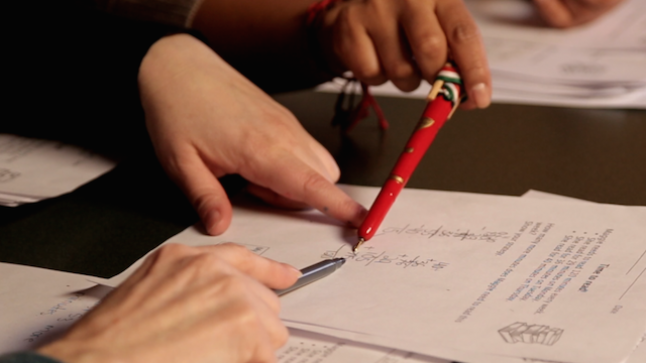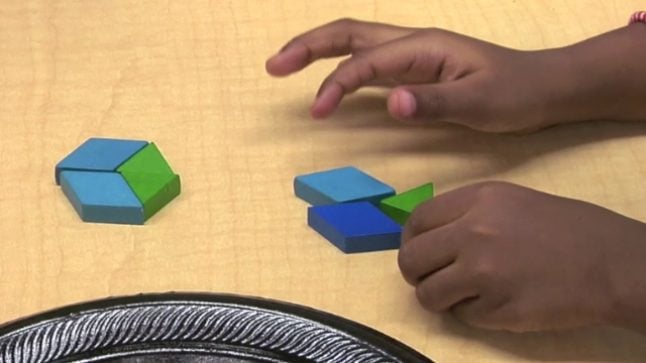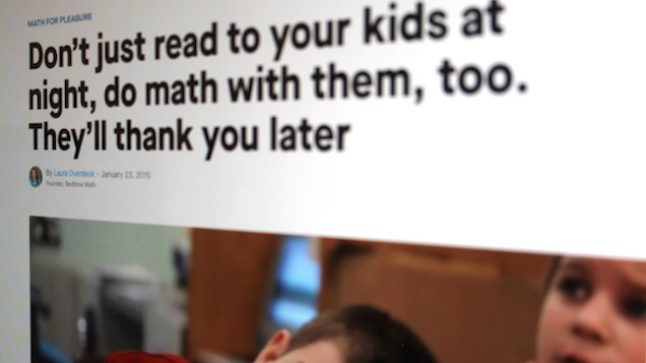Series: About Early Math
Teachers’ Perspectives on Math and Language Arts Instruction
May 4, 2015
While differences exist between math and language arts, teachers can use similar strategies in teaching both subjects. "Math time is often serious and tense. Rigor and seriousness are essential, but so are the excitement and creativity that teachers generate when teaching language arts."
- Age/Grade Level: Pre-K, Kindergarten, 1st Grade, 2nd Grade, 3rd Grade
- Tags Number Talks, Books
Series: About the Collaborative April 29, 2015
Collaborative Emphasizes the Early Years at National Math Conferences
At the 2015 NCTM Research Conference, Mary Hynes-Berry and Rebeca Itzkowich described the importance of relating math to real-life problems, and Jeanine Brownell, Bilge Cerezci, and Erin Reid explained the Collaborative’s HIS-EM teacher assessment tool.
Series: Focus on the Child April 27, 2015
Sorting Rocks with Child 32
A child creates groups out of a collection of rocks.
- Topic: Sets
- Age/Grade Level: Pre-K, Kindergarten
- Tags Child 32, Nature
Series: Hear from the Experts April 14, 2015
Working in STEM Fields Is Possible through Hard Work, Not Genetics
"Math skills are increasingly important for getting good jobs these days—so believing you can’t learn math is especially self-destructive. We also believe that math is the area where America’s 'fallacy of inborn ability' is the…
Series: Book Ideas April 8, 2015
4 Children’s Books to Shape Up Geometry Skills
From recognizing octagonal stop signs to remembering where the cookies are stored, children encounter geometry early and often. There are plenty of children's books that kids love to further pique their interest. We've listed a…
- Topic: Spatial Relationships, Shape
- Age/Grade Level: Infants, Toddlers, Pre-K, Kindergarten, 1st Grade, 2nd Grade, 3rd Grade
- Tags Mapping, Books, Pat Hutchins, Tana Hoban, Joan Sweeney, Michael Rosen, shape, Shapes Shapes Shapes, Me on the Map, Changes Changes, We're Going on a Bear Hunt, Helen Oxenbury
Series: Ideas at Work March 30, 2015
Intentional Teaching Comes to Life with Big Shoulders Project
A Chicago-area teacher's intentional teaching and efforts to differentiate for students of varying ability and confidence resulted in a rich math lesson. Based on Audrey Wood's classic book The Napping House, students created their own…
- Topic: Pattern
- Age/Grade Level: Pre-K, Kindergarten, 1st Grade
- Tags Food, Books, Audrey Wood, The Napping House
Series: About Early Math March 30, 2015
There’s No Such Thing as “Bad at Math”
This article discusses strategies for raising children to enjoy math before beginning preschool. Unfortunately many children never develop this appreciation. In fact, even at a young age, children can develop math anxiety or a belief…
- Age/Grade Level: Pre-K
- Tags Play, Books, Math Anxiety
Series: About the Collaborative March 26, 2015
Flexible Thinking Useful for Children and Teachers at Innovations Schools
"I was taught algorithms in school," says coach Liz Avila. "There wasn't much thought that went into the math that I did." The Innovations project aims to alter this "plug-and-chug" method of problem solving, through…
- Topic: Number Operations
- Age/Grade Level: Pre-K, Kindergarten, 1st Grade, 2nd Grade, 3rd Grade
- Tags Number Talks
Series: Focus on the Child March 19, 2015
Using Shape Blocks for Visual and Spatial Memory with Child 35
A preschool student puts together shape blocks to make larger, more complicated shapes from memory. In doing so, she makes connections between the various configurations she is constructing.
- Topic: Shape
- Age/Grade Level: Pre-K, Kindergarten
- Tags Child 35
Series: About Early Math March 16, 2015
Making “Math for Fun” a Reality
In this article on Quartz, Laura Overdeck, the founder of Bedtime Math, reflects on young students' differing perceptions of math and literacy. While many young students read for fun, very few do math for fun.…
- Age/Grade Level: Infants, Toddlers, Pre-K, Kindergarten, 1st Grade, 2nd Grade, 3rd Grade
- Tags Math Anxiety
Do the math.
Free videos.
Free newsletter packed with ideas.
Free professional learning modules.
